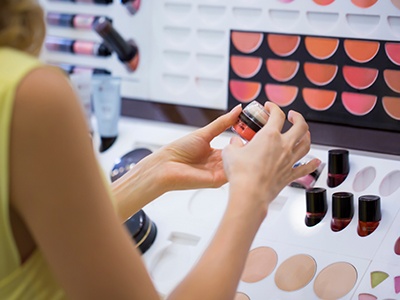AVOID TOXIC CHEMICALS IN COSMETICS AND PERSONAL CARE
AVOID TOXIC CHEMICALS IN COSMETICS AND PERSONAL CARE
Save your skin by learning how to stay away from the toxic chemicals that we may be applying to our bodies!

While much media attention has focused on healthy nutrition and information about eating organic foods, some interest is now turning to not just what we put in our bodies, but also what we put on our bodies. Our skin is the largest organ in the human body as well as part of our detoxification system. Did you know that your skin absorbs 60% of the topical products applied? So let’s consider how our skin is impacted by the many chemicals we intentionally apply to it.
Every day, we reach for products that help keep us clean and fresh, shiny and beautiful. All of these products contain a variety of chemicals, some of which are very safe and helpful and others that have potentially serious health risks. Because most ingredients have scientific names, it’s hard to know which are which. Manufacturers can choose to use synthetic, less expensive and unhealthy ingredients to create cosmetics and toiletries, but there are many brands that create clean, safe products that are just as effective.
The Personal Care Products Council sets standards for brands to provide full ingredient transparency on every formulation. When you read the ingredient list, you should see a common name along with its specific scientific name beside it. This labeling is standard across the beauty industry and is recognized internationally. Then you’ll know what’s really in the product.
You should also become familiar with some of the more common toxic chemicals that should not be in your cosmetics or skin care. The following categories have cleaner and safer alternatives, so check every brand you use.
PARABENS
These are synthetic preservatives shown to easily absorb in the skin and bioaccumulate. There are some studies that show parabens mimic estrogen and disrupt hormones, and have been found in breast cancer tissue. Safer alternative- Vitamin E.
SULFATES
Most commonly used for sudsing and foaming, e.g., sodium laureth or sodium lauryl sulfate. Sulfates break down lipids and proteins, irritating and drying out skin. Safer alternative- sugar or coconut oil compounds.
PETROLEUM (PETROLATUM)
Used in so many products as a moisture barrier, sunscreen and in cleaning products, it may contain heavy metals and carcinogens. Safer alternative- unrefined coconut oil, shea butter, lanolin, olive oil.
UREAS
Ureas are common synthetic preservatives, humectants and buffering agents, e.g. quarternium-15. They can be absorbed through the skin and may release formaldehyde, a known carcinogen and neurotoxin. Safer alternative- enzymes, amino acids, fruit extracts.
There are many others to avoid by reading the ingredient list and analyzing the risks. Look to avoid PEG Compounds, BHA and BHT, Triclosan, Dimethicone, EDTA’s, and Propylene Glycol.
For more information about these and other chemicals, go to the Environmental Working Group’s site at www.ewg.org and look for their free guides.
In many stores, there are environmentally conscious brands, such as MyChelle Dermaceuticals, whose products are safe and economical.